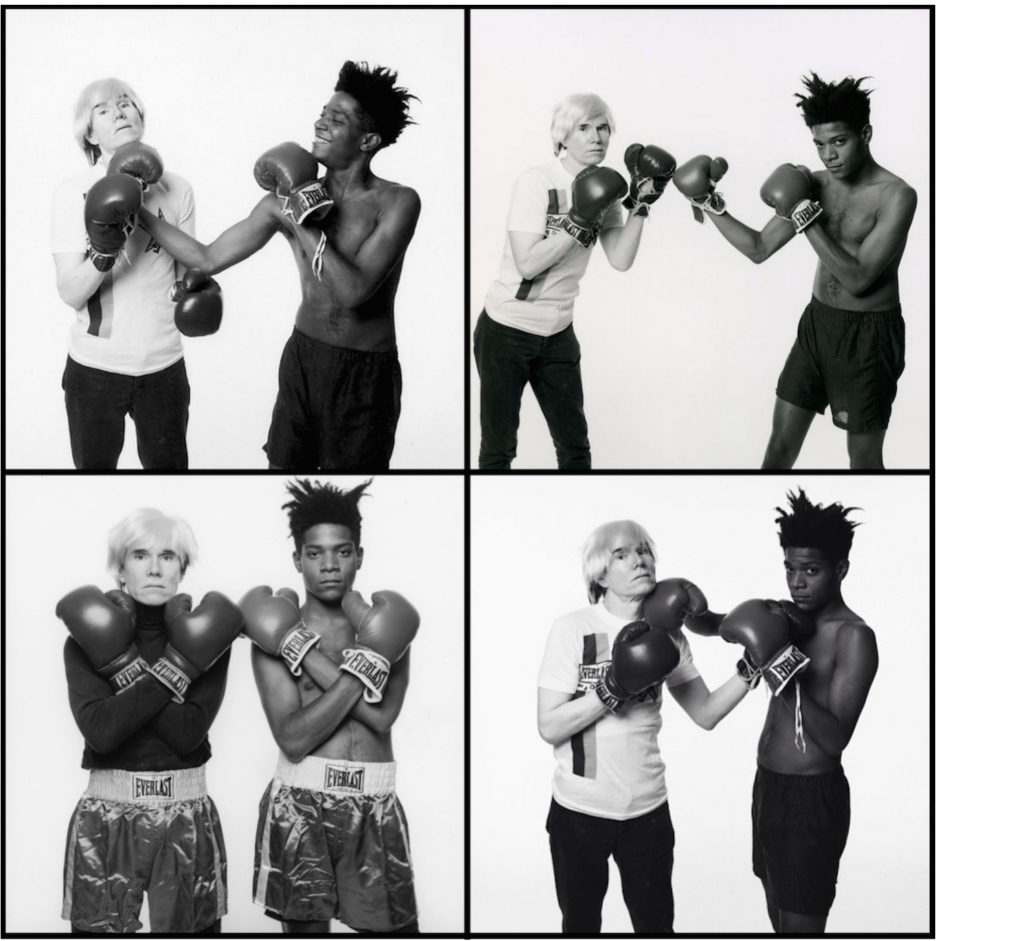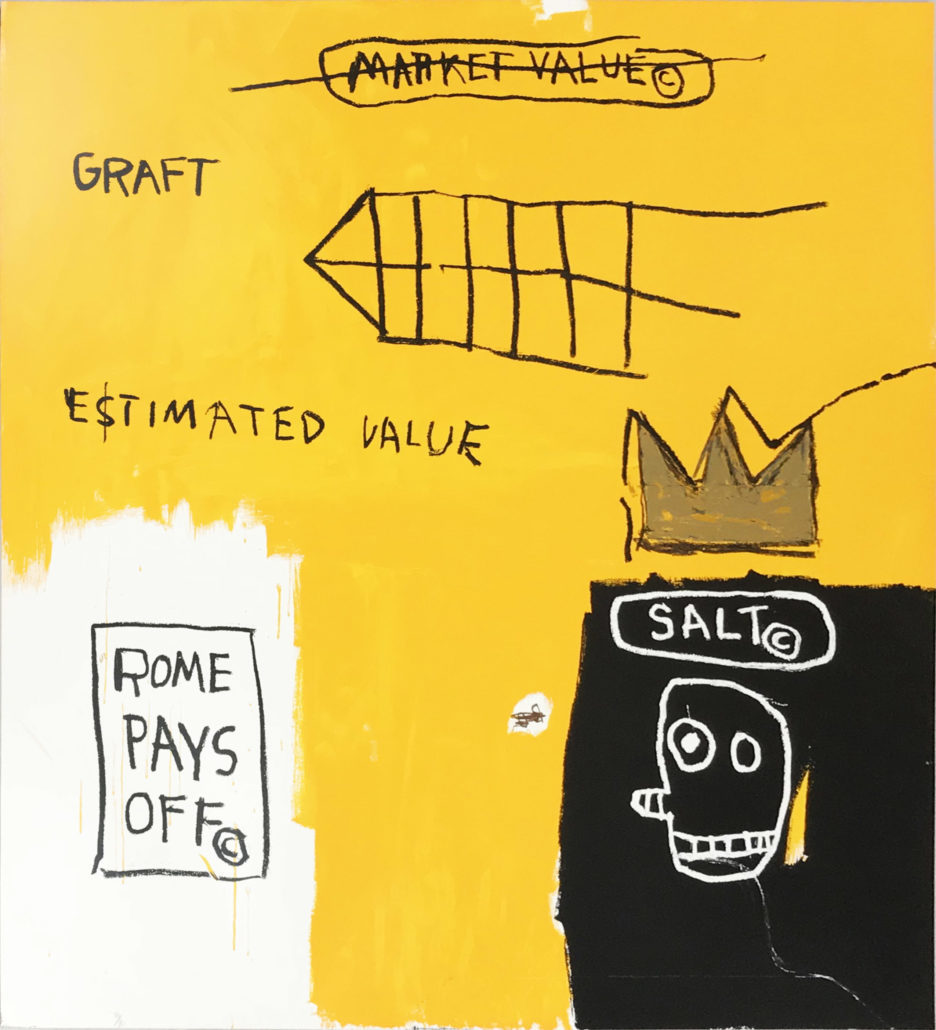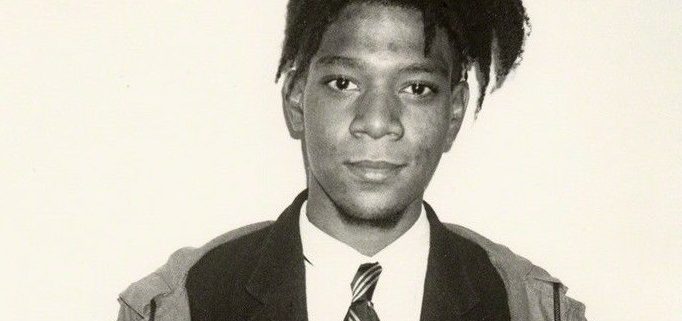Jean-Michel Basquiat’s Life and Work
Basquiat: A Review
Jean-Michel Basquiat is best-known as the street-smart graffiti artist who rose from New York’s punk scene. He gained notoriety during the late 1970s as part of the graffiti duo known as SAMO, which combined elements of the hip-hop, punk, and street art movements in Downtown Manhattan. Less than a decade later, his neo-expressionist pieces were being exhibited in galleries and museums around the world. Basquiat’s paintings incorporated elements of poetry and other forms of writing, as his works often married images with text. With this style, he produced moving social commentary and critique on politics, racism, class struggle, and more.
Basquiat’s Journey
Childhood and Early Life
Basquiat was born in Brooklyn on December 22, 1960, the second of four children, although his elder brother passed away shortly before Basquiat’s birth. His appreciation for art stemmed from his mother Matilde who would often take him to art museums throughout Manhattan, and even enrolled him as a junior member of the Brooklyn Museum of Art. In 1968 young Basquiat was hit by a car, which led to the removal of his spleen. While recovering, Basquiat was gifted the Gray’s Anatomy book by his mother. Little did he know it, but this book would come to influence his future art style profoundly. Basquiat was a quick learner, having mastered English, French (from his Haitian father), and Spanish (from his Puerto Rican mother) by age 11. His teachers noticed his apparent artistic talent and encouraged its development, leading to Basquiat’s enrollment in a private art school, where he absorbed influence from texts of the three languages he knew.
However, by the time he reached age 15, Basquiat’s life had taken a turn for the worse. His parents had separated, leaving him and his sisters to be raised by their father as they moved back and forth between New York City to Peurto Rico, and then back again. Additionally, his mother was committed to a mental institution and continued to be in and out of them. Basquiat ran away from home at 15, electing to sleep on park benches. Not long after, the police arrested him and returned him home to his father. Basquiat dropped out of high school, leading to him getting kicked out of his house by his father as punishment. He supported himself by staying with friends in Brooklyn while selling t-shirts and homemade postcards.
Basquiat’s Work
In 1976, one year after he had run away from home, Basquiat and his friend Al Diaz had begun creating graffiti art on the sides of buildings in Downtown Manhattan under the pseudonym of SAMO. The duo quickly received attention from the local media with its ultra-modern, anti-establishment, anti-religion, anti-politics works of street art, the most notable of these being the Village Voice. However, Basquiat and Diaz eventually had a falling out which led to Basquiat ending SAMO with the iconic message SAMO IS DEAD. This message was repeated on the facade of various downtown art galleries and buildings. The impact of the break up was taken so seriously, that a mock wake was even held for SAMO.

Image from www.henryflynt.org
After a short time of struggling on the streets, Basquiat’s name eventually became a well-regarded artist. In 1980, he took part in his first group art exhibition, known as “The Times Square Show.” With his myriad of social, political, and artistic influences, not to mention his unique heritage, Basquiat tackled a variety of subjects ranging from the transatlantic slave trade to anti-Black stereotypes on the TV. Basquiat never shied away from publicly commenting on racial injustice in America.
By the mid-1980s, Basquiat had become so known, that he began collaborating with world-famous artist Andy Warhol in various art shows. Warhol and Basquiat were incredibly close friends, and Basquiat wanted to use this opportunity to elevate himself in the art world. In 1986, Basquiat became the youngest artist to exhibit work in Germany’s Kestner-Gesellschaft Gallery, where about 60 of his paintings were shown. However, despite the numerous showings (which did not do very well), Basquiat never seemed to break that ceiling of “high art really.” Though his works were selling, he never felt fully accepted. Eventually, the two had a falling out, though Basquiat was still incredibly affected by Warhol’s death in 1987.

Basquiat’s Death and Legacy
Near the end of his life, Basquiat had cut himself off from society. Though he was considered to be on top of the art world, his personal life suffered greatly. He developed a drug addiction (which some attributed as a way to cope with Warhol’s passing), leading to a further downward spiral. He left New York in an attempt to recover in Hawaii, although he returned shortly after he left. Despite his attempts at recovery, Basquiat passed away from an overdose in 1988 in his art studio at age 27.
After his death, the 1996 biopic “Basquiat” would expose a new generation of audiences to the street artist’s work, which led to a further elevation of his status in the art world. In addition to the biopic, Basquiat has been the subject of documentary films such as Ego Bertoglio’s “Downtown 81” (2000) and Tamra Davis’ “Jean-Michel Basquiat: The Radiant Child” (2010).
Over the years, Basquiat’s work has been exhibited in many museums, such as including the Whitney Museum of American Art, the Brooklyn Museum, and the Guggenheim Museum Bilbao. To this day, his work is highly sought-after by art collectors from around the world, with pieces regularly commanding a price of tens of thousands of dollars.

JEAN-MICHEL BASQUIAT – Rome Pays Off





Loved the article!
Melissa,
We’re so glad you enjoyed. Basquiat is a deeply fascinating artist. We worked hard on the article and we’re glad you enjoyed it.
Thank you for this, I’ve been learning a lot about Basquiat’s artwork, and it was highlighted again with the most recent sale of his work. Wonderful description of his life, especially with the video, I am looking forward to checking out one of the documentaries!